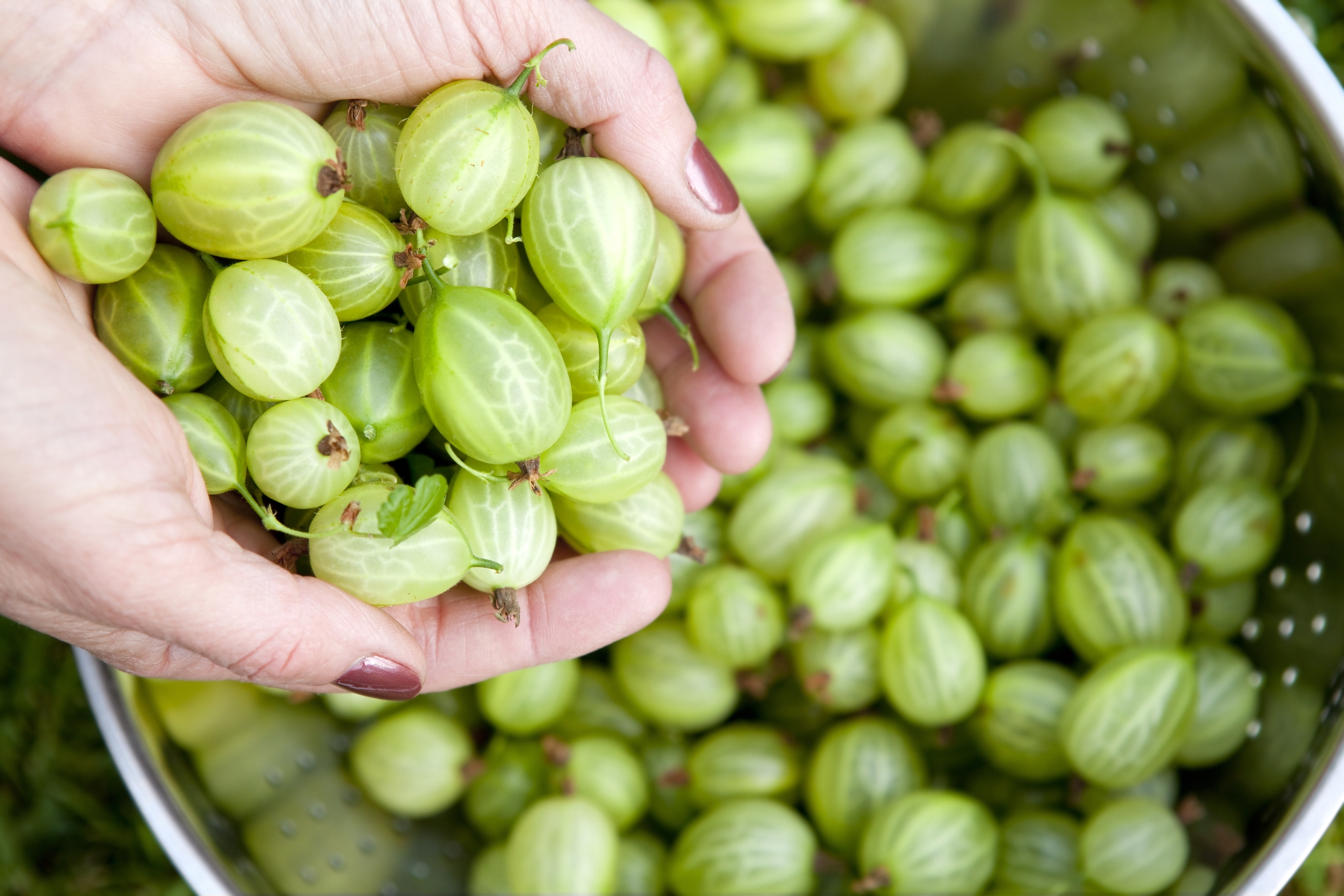Gooseberry
Gooseberries, small orb-like fruits with a translucent hue ranging from green to red, are known for their distinctive tartness. Native to Europe, North Africa, and West Asia, these berries have traveled far and wide, finding a place in the gardens and wild landscapes of Alberta and other parts of Canada. Popular for both their culinary and ornamental attributes, gooseberries are part of the Ribes family, making them close relatives to currants. Their unique flavor profile and versatility in cooking have granted them a cherished spot in the kitchens of many Canadian homes.

More on Gooseberry
About
The gooseberry bush is a thorny shrub, producing clusters of berries that, when mature, are often dotted or striped, giving them a character distinct from other berries. Their skins can range from smooth to slightly veiny. Depending on the variety, the taste of a gooseberry can vary from sharply tart to sweetly tart.
In Alberta, the climate is conducive for gooseberries to flourish, especially the hardier varieties that can withstand cooler temperatures. These shrubs prefer well-draining soil, a good mix of sun and shade, and are relatively low-maintenance once established. While gooseberries have been cultivated for centuries, wild varieties can still be found, offering foragers a delightful find during the berry-picking season.
History
Gooseberries have a rich history in European culinary traditions, from which many Canadian customs, including those of Alberta, have drawn inspiration. When European settlers came to Canada, they brought with them the knowledge and cultivation techniques for several plants, including gooseberries.
Over time, gooseberries have been integrated into Canadian cuisine, where they've been featured in pies, preserves, and even savory dishes. In Indigenous cultures of Canada, wild gooseberries, like other berries, play a role in sustenance and medicinal uses. Their presence in Alberta's culinary scene reflects both the province's Indigenous heritage and the influences of European settlers.
Ways To Cook
Gooseberries, with their blend of sweetness and acidity, offer a diverse range of culinary applications:
- Raw Consumption: Fresh gooseberries, especially the riper, sweeter ones, can be enjoyed as-is, though many prefer them in prepared dishes due to their tartness.
- Jams and Jellies: Their natural pectin content makes them excellent for preserves, where sugar balances their sharpness.
- Pies and Desserts: Gooseberry pie is a classic, often paired with other fruits like elderberries or apples.
- Sauces: A gooseberry sauce or compote can accompany meats, adding a tangy complement to rich dishes.
- Salads: Tossed in salads, they provide a burst of tart freshness.
- Beverages: They can be used in smoothies, juices, and even as flavorings in certain alcoholic drinks.
- Pickling: Pickled gooseberries have a delightful tang and can serve as a side or garnish.
For those cultivating or foraging for gooseberries in Alberta, it's essential to be aware of the gooseberry's readiness. A gentle squeeze can indicate their ripeness, as they yield slightly when mature.
